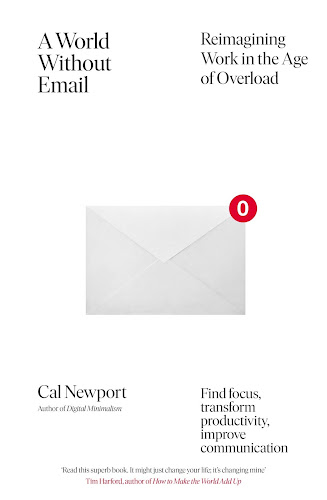If email anxiety is consuming you, follow Newport for possible resolutions.
Until it popped up on my computer screen recently I couldn't have ever sensed if something as useful as an email was making us miserable. Curated by Washington University Professor Cal Newport, the message suggests that sending and receiving messages come for a price that we hadn't bargained for. Newport backs himself with survey data and clinical studies to prove that cheaper mode of incessant communication guarantees our misery. Do emails stacked in my inbox generate anxious moments? it does by effecting both our productivity and our mental health. If nothing, it undervalues the concentration of mind to produce valuable output.
Nearly three decades into emailing in the country may have cost the postal services a great deal but not without letting email users like you and me remain in perpetual low-grade anxiety, and that too unknowingly. Could it be the intangible cost of relying on instant communication that we don't mind skipping a meal but rarely let checking the mailbox elude us. One may shrug it aside as an incidental side effect of a compulsive in-box habit but in reality it may be much more serious than that. And, facts tend to prove it so.
Using time-tracking software, researchers at the University of California found that employees of a large company checked their inboxes an average of 77 times a day, with the heaviest user checking more than 400 times daily. Psychologists contend that such involuntary action induces a heavy cost in terms of mental energy, reducing cognitive performance while creating a sense of exhaustion and reduced efficacy. These dual reactions - admiration of instant communication and detestation due to email burnout - leave many knowledge workers in a state of frustrated resignation. The unfortunate mismatch may seem unavoidable.
However, it has emerged as a serious concern in recent times. Enacted in France in 2007, a new labor law gives email users in offices the so-called right to disconnect. Companies with fifty or more employees were required to negotiate specific policies about the use of e-mail after work hours, with the goal of reducing the time workers spent in their in-boxes during the evening or over the weekend. One of its kind, the law aims to reduce burnout of employees, which is more relevant now as the shift toward a more frenetic work-from-home makes life miserable. Not sure if it is being noticed elsewhere, though.
Our compulsive relationship with email needs serious rethinking, Newport incisively argues in his new book A World Without Email. Since we can't get away from it given our evolutionary obsession with social interaction, the need to reduce the tortuous cycle of increased email workload invariably causing frustrating misunderstandings and confused exchanges has never been more compelling. Far from improving human condition, however, this efficient mode of communication is causing uncontrolled distress to most of us. Look around and one will find compelling evidence for renegotiating our engagement with emails.
Even if one were to disagree, there are numerous studies which prove that the need to be constantly connected is associated with suboptimal health outcomes. Little gets realized that the more one spends time on email, the higher is one’s stress for that hour. I have reasons to suspect that much deeper forces are at play in generating our mismatch with this tool, driving us nuts even if we have serious intentions of ignoring an email or a potential connection. Ironically, we have been condemned to ignore the source of discontent that, if properly managed, stands to improve our work output. .
The compulsion of communicating instantaneously notwithstanding, we have been reduced to human routers of digitized information. Just because it’s possible for us to send and receive messages incessantly through our waking hours doesn’t mean that it is a sustainable way to exist. Need it be said that the sheer volume of communication generated by modern professional email degrades our traditional social circuits, if it hasn't done so already. Unrestricted reliance on email has eroded the emotional content of human exchanges. Technology is indeed turning us into zombies.
The trouble is that not many seem to be complaining, but for those who have been at the receiving end of it. An employee was recently devastated after receiving an email from his employer which read, 'We are still not sure how the office will run without you from next week'. If that wasn't less demeaning and distressing, the message carried a smiley with the signature, and was copied to all other employees' of the organisation. So much for speed and convenience at the cost of degenerating human emotions and feelings. Unless we open our eyes to the emerging new reality, we will get consumed by technology if we aren't already!
by Cal Newport
Penguin UK
Extent.296. Price. Rs 699.



